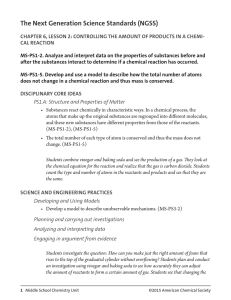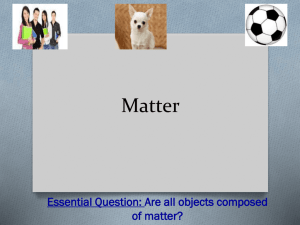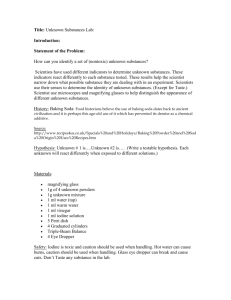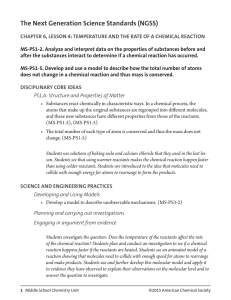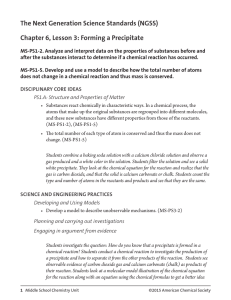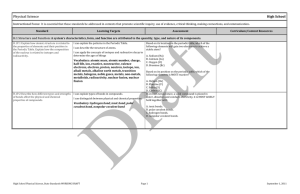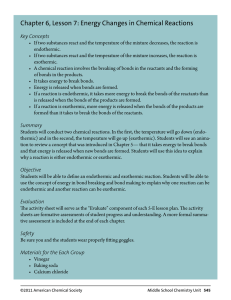The Next Generation Science Standards (NGSS)
advertisement
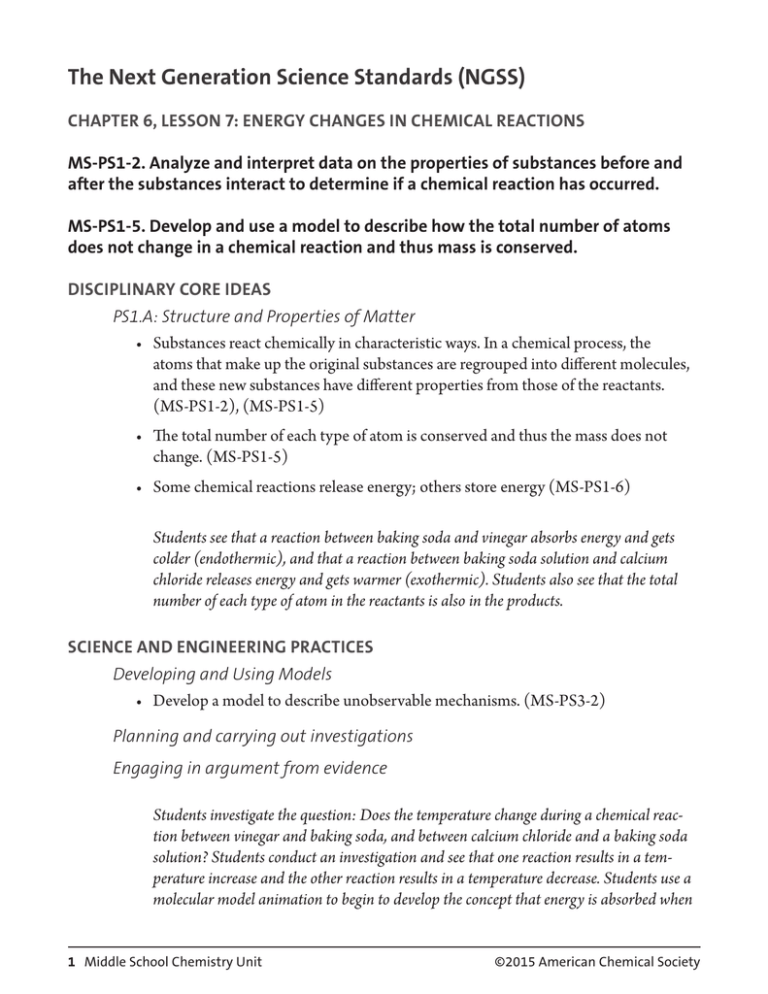
The Next Generation Science Standards (NGSS) CHAPTER 6, LESSON 7: ENERGY CHANGES IN CHEMICAL REACTIONS MS-PS1-2. Analyze and interpret data on the properties of substances before and after the substances interact to determine if a chemical reaction has occurred. MS-PS1-5. Develop and use a model to describe how the total number of atoms does not change in a chemical reaction and thus mass is conserved. DISCIPLINARY CORE IDEAS PS1.A: Structure and Properties of Matter • Substances react chemically in characteristic ways. In a chemical process, the atoms that make up the original substances are regrouped into different molecules, and these new substances have different properties from those of the reactants. (MS-PS1-2), (MS-PS1-5) • The total number of each type of atom is conserved and thus the mass does not change. (MS-PS1-5) • Some chemical reactions release energy; others store energy (MS-PS1-6) Students see that a reaction between baking soda and vinegar absorbs energy and gets colder (endothermic), and that a reaction between baking soda solution and calcium chloride releases energy and gets warmer (exothermic). Students also see that the total number of each type of atom in the reactants is also in the products. SCIENCE AND ENGINEERING PRACTICES Developing and Using Models • Develop a model to describe unobservable mechanisms. (MS-PS3-2) Planning and carrying out investigations Engaging in argument from evidence Students investigate the question: Does the temperature change during a chemical reaction between vinegar and baking soda, and between calcium chloride and a baking soda solution? Students conduct an investigation and see that one reaction results in a temperature increase and the other reaction results in a temperature decrease. Students use a molecular model animation to begin to develop the concept that energy is absorbed when 1 Middle School Chemistry Unit ©2015 American Chemical Society bonds are broken and energy is released when new bonds are formed. The net amount, either absorbed or released, determines whether a reaction is endothermic or exothermic. Students use and further develop this molecular model and apply it to evidence they have observed to explain their observations on the molecular level and to answer the question to investigate. CROSSCUTTING CONCEPTS Cause and Effect • Cause and effect relationships may be used to predict phenomena in natural or designed systems. (MS-PS1-4) Scale, Proportion, and Quantity • Time, space, and energy phenomena can be observed at various scales using models to study systems that are too large or too small. (MS-PS1-1) Energy and Matter • Matter is conserved because atoms are conserved in physical and chemical processes. (MS-PS1-5) • The transfer of energy can be tracked as energy flows through a designed or natural system. (MS-PS1-6) Students use molecular-level models of atoms breaking bonds and making bonds to explain how these sub-microscopic processes affect the macroscopic observable characteristic of an increase or decrease in temperature during a chemical reaction. 2 Middle School Chemistry Unit ©2015 American Chemical Society
